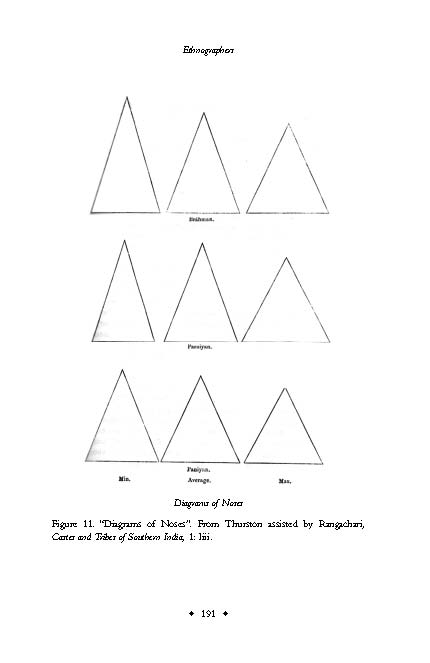As a graduate student in an interdisciplinary department, I inhabit at least two kinds of worlds: those that are fluent in feminist theories of science and technology and those that speak more of a naturalized language of organizations, technologies, and action. I find in each place generous people who are interested in what I bring to the conversation from the other world.
Every so often, however, I hear something like “I don’t do theory. I don’t need to make complicated words for simple things” or “oh, that academic rhetoric doesn’t make any sense!”
Doctor Decade’s video on sociomateriality is one expression of such a sentiment came into my mailbox, forwarded as an expression of such sentiment– a sentiment that, while understandable, often seems to come from a place of academic anxiety and disrespect of the writers using the “rhetoric.”
This accusation of “rhetoric” seems to me to come from difficulties people have reading cultural theories if they haven’t already been immersed in the discussion. Because these theories attempt to speak of our world in profoundly non-natural ways, they will necessarily develop and employ a vocabulary that is hard to approach at first. While this is unfortunate, I beg for more patience and assure the anxious reader that in the best case, the inaccessibility is a necessary part of the process. Theorists are often reaching for ideas themselves and are tightly referencing one another. Should my job cover letter or grant proposal not explain things more accessibly, shame on me. But asking that a particular book or publication speak in the language of all possible audiences at all times will chill the development of theory. Why don’t we ask that microbiologists’ work be written in a non-technical fashion that everyone can access all the time? First, scientists have done a good job of convincing the world that they operate in a highly expert sphere — that their inaccessibility is also their virtue. Second, scientists, like theorists, are often referencing things that non-member readers have no concept of and it would be onerous to ask for sufficiently detailed explanation at every utterance. Garfinkel and Sacks noted in their “Formal Structures of Practical Action” that we all routinely gloss in communicational interaction, glossing to indicate more than we can say in “so many words.” So why do humanists get attacked for their technical language — their glosses — in a way that scientists don’t?
So let’s briefly talk about sociomateriality and why it isn’t just a pretentious way of saying that “people use tools to do tasks.” I don’t offer a definitive description, but I know enough to argue that sociomateriality is not just academic rhetoric, as Doctor Decade and the folks who forwarded the video to me would have us believe. Sociomateriality is not just “people use tools to do tasks.” Sociomateriality comes in part from a long history of feminist studies and science technology studies that has tried to understand how scientific objectivity — the claim that we can observe general truths about a world populated with things — erases a lot of the work that goes into making knowledge. Making scientific knowledge isn’t something that happens if someone can scrub enough bias away from themselves. It happens through complex organizational arrangements of people, tools, materials, language, funding, cultural ideas about things (like gendered behavior), and more.
As Doctor Decade says, people use tools to do tasks, but there are much more interesting and politically important questions about which people use tools and what tasks are valued. Not all people have historically been created equal. Colonial powers thought that the savagery of non-European peoples inversely correlated with their machine abilities. (For more, see Adas Machines as Measure of Man.) Some people, historically, have been people who can use tools. Others were said to barely use tools and be less advanced. Even by today’s standards, the simple “people use tools to do tasks” refrain fails. Well, if you do human-computer interaction and you study Americans poking keyboards and looking at screens, then the formulation is adequate for your practical purposes. Jenna Burrell, in her book Invisible Users, argues that this formulation is not useful for understanding how the internet weaves into daily life in Ghana. She argues that people might hear about internet rumors, they may see others interacting with the computer, they may ask someone to do something for them with a computer. The internet in Ghana makes different kinds of social forms possible, but it isn’t a story of “people use tools to do tasks.”
The idea that people use tools attributes also makes assumptions about agency that impute intentionality to people. On its face, there’s nothing wrong with this but historically, intentionality has often been imputed only to those seen to be rational, sane, and human. For large swaths of history, certain enlightenment thinkers denied these attributes to people they saw as animalistic savages. This isn’t some super subtle distinction. The very categories of traditional and modern and the disciplinary histories of anthropology relied on a division between those cultures who operate according to traditional, unchanging patterns and those rational moderns who live in an ever-progressive post-Enlightenment (EuroAmerican) society. This category of agency and intention also shapes design and creativity discourse. Industrial workers are compared to robots simply doing what they’re told, rote, repeating, unthinking while designers claim to be creative, reflexive, and adaptive. Some people are more equal than others, and some are seen as having more agency than others.
So what do we do if we accept that agency is not given or natural? That the category of person is not given or natural? The sociomaterial comes from feminist philosophers of science and technology, including Lu cy Suchman and Karen Barad, grappling with how to talk about the complex ways that we make ourselves and are made up through these entanglements. This opens up a lot of politically fruitful avenues for cultural analyses of technologies. You can start asking how entrepreneurial hackers are made not only of their own skill and volition, but from the divisions of labors, outsourcing technologies, and financial networks that let them have be the visible agent while lots of people who made their work possible are hidden in the infrastructure and factories. Sociomateriality starts letting you find different ways of thinking about design; instead of designing for what people “want” or “want to do,” you can design to provoke people to understand themselves and their relations with others in new ways, or to redistribute disability by sharing the work usually placed on the shoulders of the non-normative body, or who knows! Thinking with sociomaterial literatures can open up avenues for social and technical action far beyond where we get just repeating, “people use tools to do tasks.”
(Sorry for the rough state of this post! Difference Engines is the choir in some sense, and I’m preaching. I would like to make this more accessible and post it somewhere where it might do useful interdisciplinary explanatory work. Your suggestions for that, or your experiences doing such explanation would be fantastic!)



 I spotted this shirt on a flight from Newark to Orange County two months ago. I was shocked that somebody would wear that in public, that they would wear that in public in such a regionally heterogeneous place as an airport, and at the obvious conclusion to be drawn from the shirt — the this man is god’s sweeper.
I spotted this shirt on a flight from Newark to Orange County two months ago. I was shocked that somebody would wear that in public, that they would wear that in public in such a regionally heterogeneous place as an airport, and at the obvious conclusion to be drawn from the shirt — the this man is god’s sweeper.